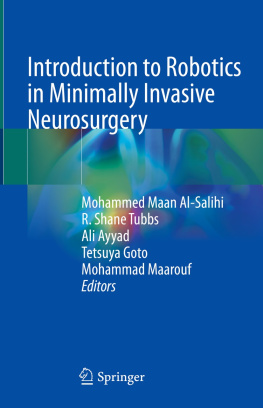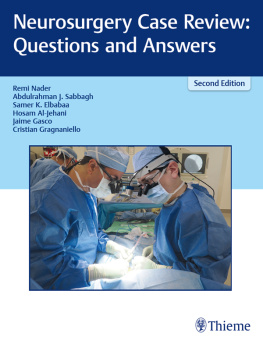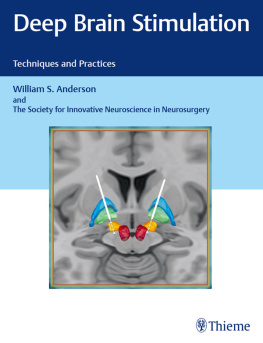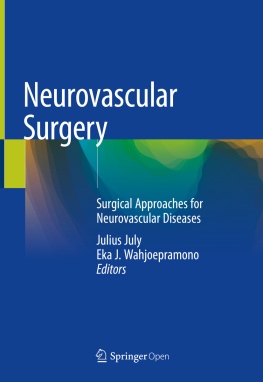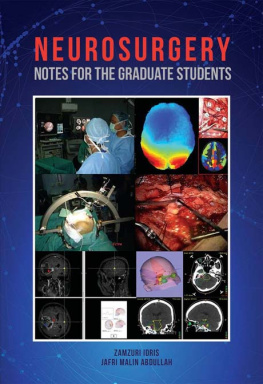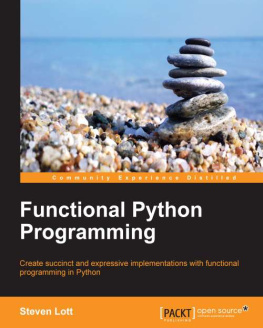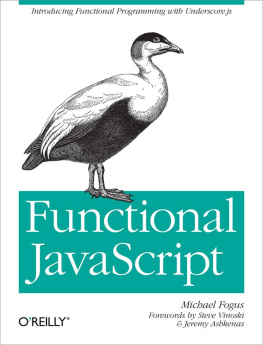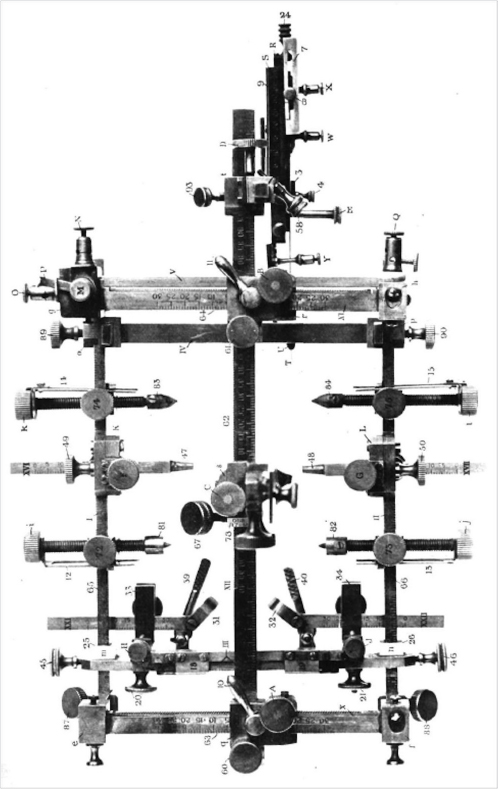Jeffrey A. Brown - Functional Neurosurgery: The Essentials
Here you can read online Jeffrey A. Brown - Functional Neurosurgery: The Essentials full text of the book (entire story) in english for free. Download pdf and epub, get meaning, cover and reviews about this ebook. City: New York, year: 2019, publisher: Thieme, genre: Science. Description of the work, (preface) as well as reviews are available. Best literature library LitArk.com created for fans of good reading and offers a wide selection of genres:
Romance novel
Science fiction
Adventure
Detective
Science
History
Home and family
Prose
Art
Politics
Computer
Non-fiction
Religion
Business
Children
Humor
Choose a favorite category and find really read worthwhile books. Enjoy immersion in the world of imagination, feel the emotions of the characters or learn something new for yourself, make an fascinating discovery.
- Book:Functional Neurosurgery: The Essentials
- Author:
- Publisher:Thieme
- Genre:
- Year:2019
- City:New York
- Rating:4 / 5
- Favourites:Add to favourites
- Your mark:
Functional Neurosurgery: The Essentials: summary, description and annotation
We offer to read an annotation, description, summary or preface (depends on what the author of the book "Functional Neurosurgery: The Essentials" wrote himself). If you haven't found the necessary information about the book — write in the comments, we will try to find it.
Functional neurosurgery resource features state-of-the-art approaches from renowned experts!
For patients with inadequately treated epilepsy, tremor, dystonia, spasticity, depression, obsessive-compulsive disorder, Parkinsons and Alzheimers disease, functional neurosurgery offers hope. Functional Neurosurgery: The Essentials is a reader-friendly introduction to this fascinating and rapidly evolving field. The text is edited by internationally prominent functional neurosurgeons Jeffrey A. Brown, Julie G. Pilitsis, and Michael Schulder. It features contributions from authors with expertise spanning the disciplines of neurosurgery, neurology, rehabilitation and physical medicine, neurophysiology, bioengineering, psychiatry and ophthalmology.
Opening with a brief history of stereotaxy/functional neurosurgery and brain stereotactic frames, 41 concise and coherent chapters explore cutting-edge approaches to a broad range of functionally treatable conditions. The chapters yield a solid foundation of understanding of the field, with insightful commentary, pearls, and nuances from the editors. The starting question in the neuroprosthetics chapter, Can a computer infer human intention or perception? brings to life the exciting, inquisitive, and pioneering spirit of this subspecialty. The robust reference list provides a guide to deeper study that should continue throughout training and practice.
Highlights
- Imaging: MRI and CT for stereotactic neurosurgery, fMRI and resting state MRI
- Movement disorders: A comparative analysis of the risks and benefits of deep brain stimulation versus lesioning
- Epilepsy: Temporal lobectomy and extra-temporal surgery; invasive monitoring, neuromodulation, laser interstitial thermal therapy, and vagus nerve stimulation
- Dystonia: Etiology to diagnosis, medical and surgical options
- Future innovations: Exoskeletons, intention controlled, and visual neuroprosthetics
The text is a fundamental resource for neurosurgical residents during their functional neurosurgery rotations and for general neurosurgeons and functional subspecialists on procedures they may not routinely perform in clinical practice.
This book includes complimentary access to a digital copy on https://medone.thieme.com.
Jeffrey A. Brown: author's other books
Who wrote Functional Neurosurgery: The Essentials? Find out the surname, the name of the author of the book and a list of all author's works by series.




